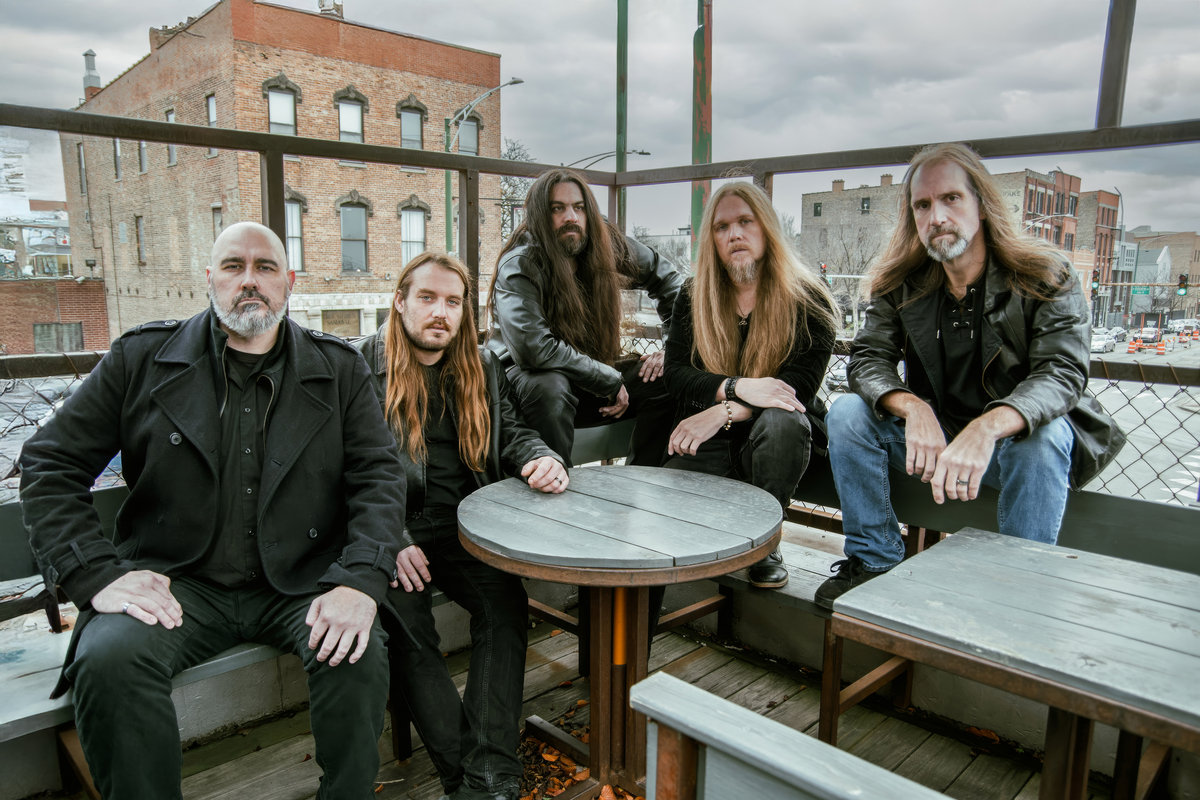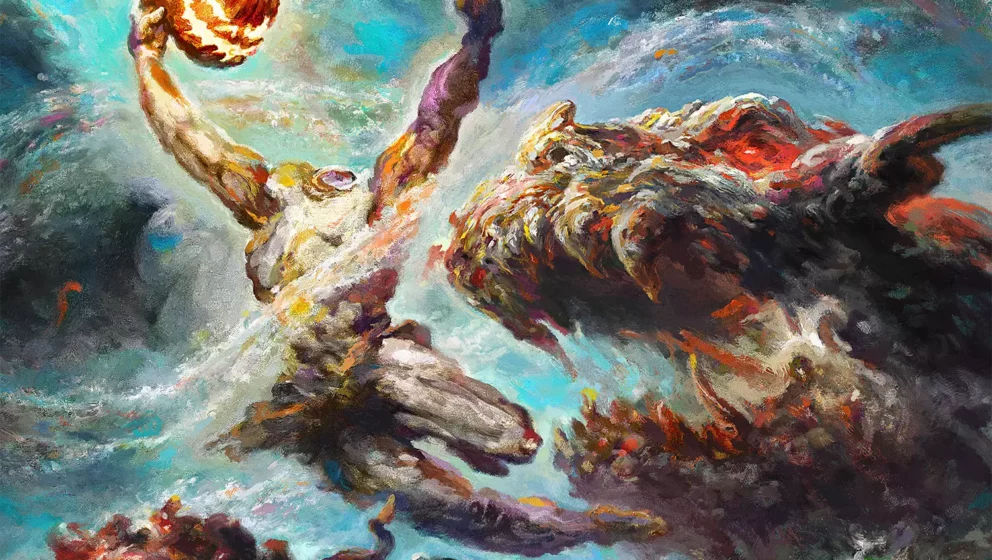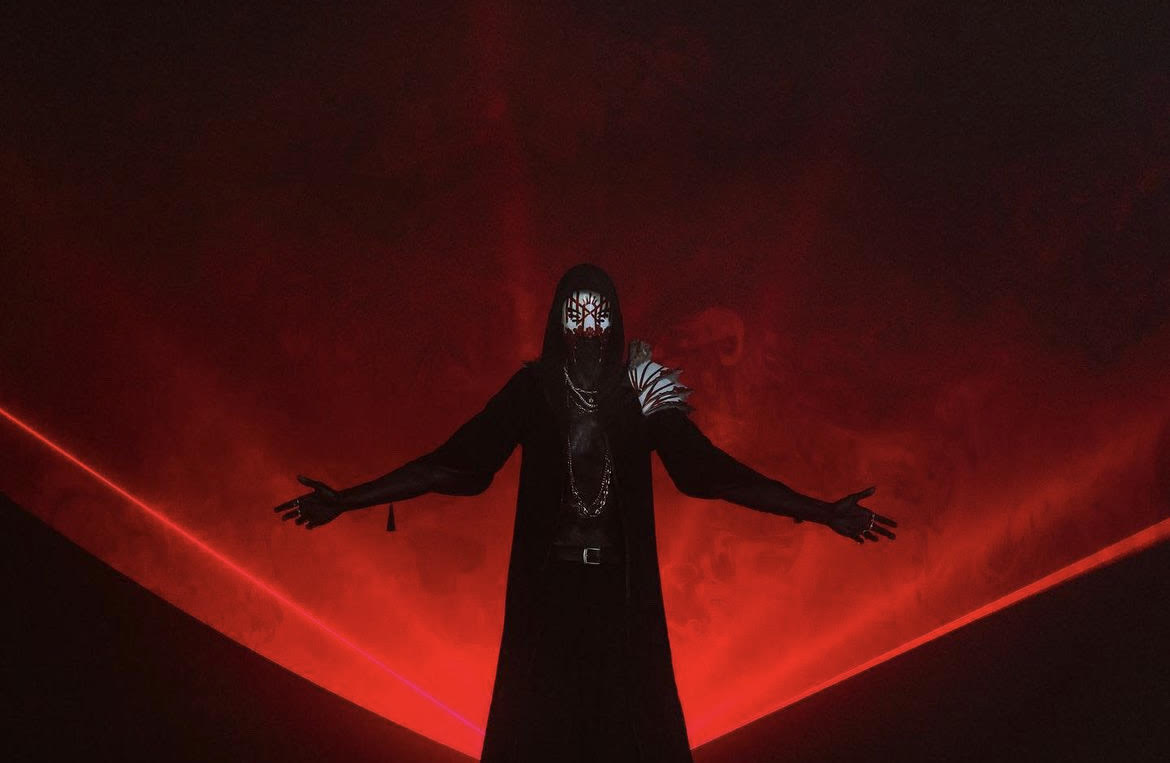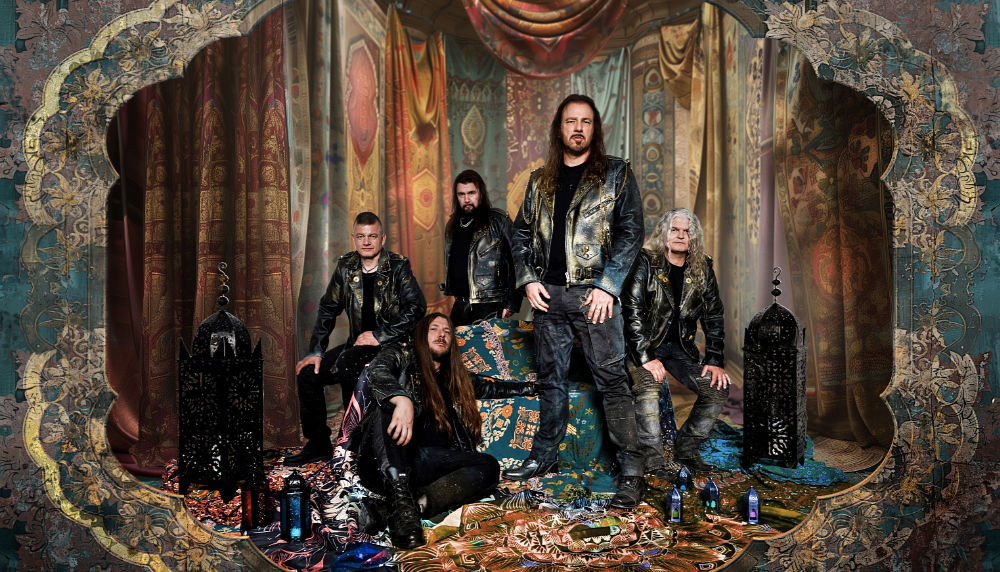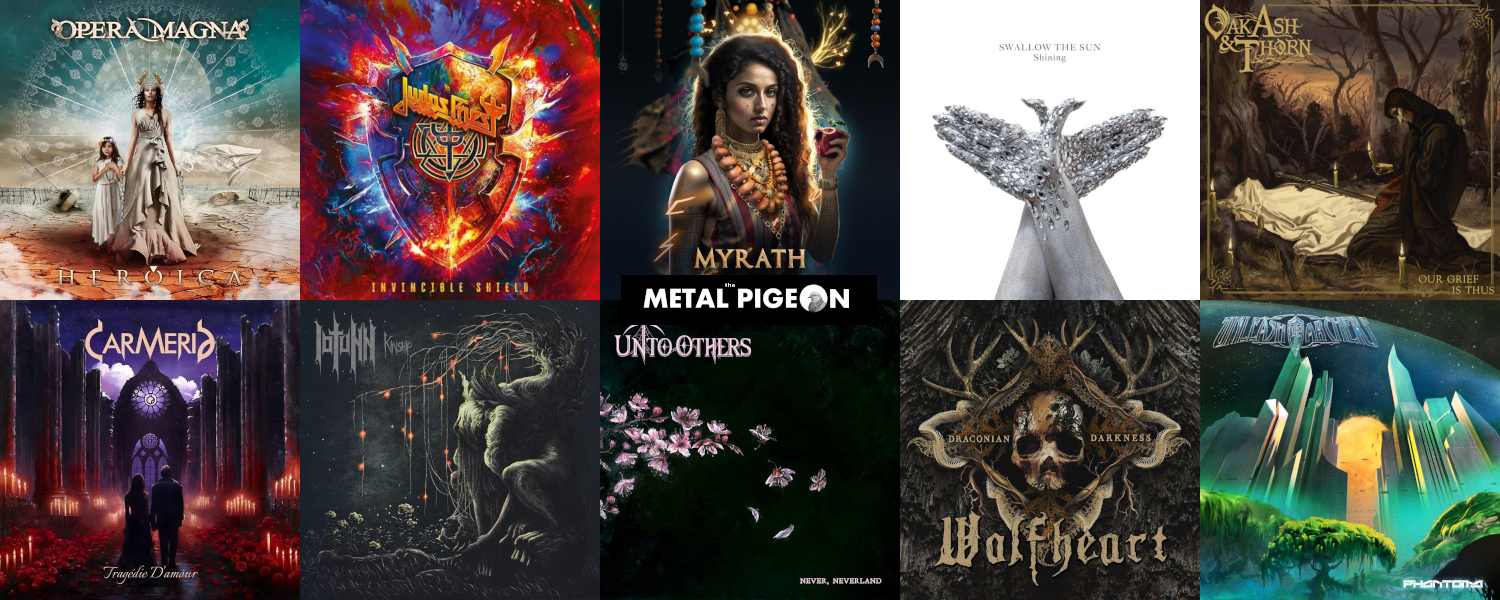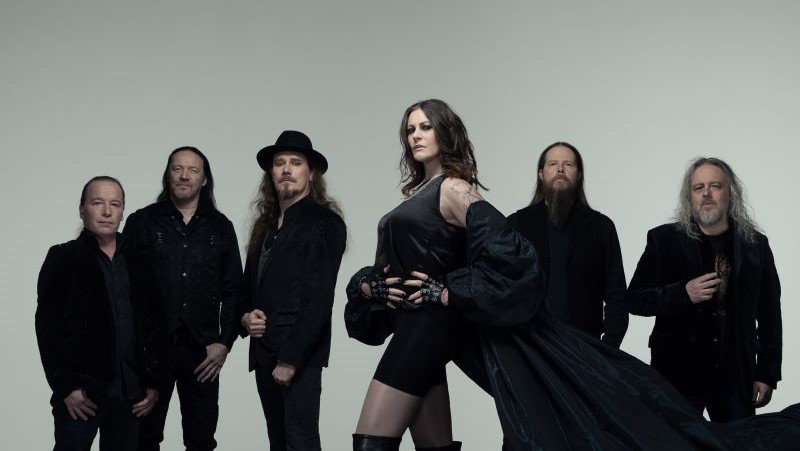
I think I look forward to deciding and narrowing down my best songs of the year lists as much if not more so than my albums lists, mainly because the songs list is always a little off balance, a little quirky and perhaps even inexplicable. Sometimes songs will just stick with you no matter how much you’ve tried to shake them due to overconsumption, or you’ll realize that your nominee for best song of the year isn’t necessarily the best representative song on a given album, or better yet, your favorite song off an album will be loathed by many! I nailed all of those categories with this year’s Best Songs, and also as an added bonus I found this incredibly easier to put together than this year’s albums list which is the tightest race I’ve come across in ages for the top spot. Going to keep this preamble shorter than usual, only to add that if covers were allowed on the Best Songs list, The Halo Effect might’ve had two entries here with their renditions of Danzig’s “How the Gods Kill” and Broder Daniel’s “Shoreline”, they were just that damn good. Anyway, the list!
10. Majestica– “Go Higher” (from the album Power Train)
Effortless, classic Europower with the Scandinavian gloss of Stratovarius and the gritty, galloping riffs of Gamma Ray and pre-Hellfire Club Edguy, Majestica outpaced most power metal artists this year with their Power Train album, and in particular, its standout album deep cut “Go Higher”. Seemingly overlooked while most of the general fan attention was directed at the title track and “No Pain, No Gain”, I thought this song should’ve been a single. Maybe its that Tommy Johannsson’s vocals here remind me of Timo Kotipelto circa Visions or Destiny era Strato, replete with a noticeable English as a second language accent thing happening which sounds so fitting and perfect for this style of power metal (the Sonata Arctica call and response backing vocal lines are also a chefs kiss). And lets not bury the lede here, part of this songs awesomeness lies in its lyrical theme, of a version of Back to the Future where our hero ends up in 1995 instead of 1955 (or 2015 for that matter). Johannsson’s gloriously triumphant delivery of the line “Hearing one man’s voice saying loud in the night, “I’m your density. I mean destiny.”” is a contender for lyric of the year. I’d like to think in this song our protagonist somehow got handed a copy of Land of the Free and decided to stick around for the late 90s power metal explosion that was soon to follow. Marty McFly would be proud.
9. Brainstorm – “Garuda (Eater of Snakes)“ (from the album Plague of Rats)
Riding high on a late career bloom, Brainstorm are making their second consecutive appearance on the Best Songs list, having landed here in 2021 with the anthemic “Glory Disappears” off Wall of Skulls. That song was classic Andy B. Franck, an arms wide expansive bellow-worthy chorus that his muscular vocal delivered with satisfying aplomb, a reminder of just how incredible (and overlooked) he is within the world of power metal. This time however, Franck takes a bit of a backseat to the machinations of his fellow bandmates, particularly guitarists Torsten Ihlenfeld and Milan Loncaric, who deliver a Teutonic slab of concrete riffs, sounding like equal parts Accept and Kreator and making this more of a band centric effort. Franck’s brilliance shines through however with some clever vocal melody design in the delayed effect he employs on the chorus by waiting a half second before delivering “…Garuda!”. It wasn’t lost on many of us longtime fans that this song was a knowing nod to the band’s past via the inclusion of east Asian melodicism, insinuating that it was a close spiritual cousin to Brainstorm classic “Shivas Tears” from Soul Temptation, making this a headbangin’ full circle moment for everyone.
8. Vintersorg – “Efter Dis Kommer Dimma” (from the album Vattenkrafternas Spel)
Even though Vintersorg’s first album in eight years was highly anticipated by yours truly, I was still turned ecstatic by the flood of nostalgia soaked dopamine this opening salvo filled me with upon first listen. Characterized by the trademark “ooohs” Vintersorg used to dish out like Halloween ear candy during the old Otyg days, this brilliant track brought me back to the comforting warmth of Cosmic Genesis era Vintersorg, just before the progressive metal overwhelmed his sound for the next many years and albums. This wasn’t an unexpected return, after all Vintersorg’s last album in 2017 was the sequel to Till fjälls, which saw him reincorporate more of his folk influences into his modern Vintersorg mix, but “Efter Dis Kommer Dimma” is a return to that sweet spot crossroads of folk melodicism meeting progressive songwriting as only Vintersorg can navigate. This is inarguably the catchiest song the man has written in well over a decade, and yet its still very strange and weird. The keyboard lines deliberately run contrary to the entire thrust of the rest of the song, and often the percussion seems to accelerate just a beat ahead of the riffs in what feels like a purposeful disruption of anything getting close to a standard song structure, but damn it all if that’s not the best hook he’s ever penned in the chorus. The lush layered harmony vocals from Wytch’s Johanna Lundberg are the whipped cream on the espresso in this folk metal doppio con panna.
7. Avantasia – “The Witch“ (from the album Here Be Dragons)
This was a happy surprise, not because an Avantasia song made the year end list (it would be a disappointment if one hadn’t), but because the Tobias Sammet songs that usually make and top these kind of lists are the syrupy ballads such as “Alone in Myself”, or the cinematic epics, the pomp and grandiosity of a “Ghost in the Moon” or the breathtaking sweep of a “Restless Heart and Obsidian Skies”. But the best song on Here Be Dragons instead turned out to be its most propulsive rocker, “The Witch”, a Tommy Karevik co-lead vocal empowering this sleek chorus with his smooth yet muscular delivery. It was also a delight to hear him open the song by himself, making a break from the usual method Tobias employs where he’s the first one at bat and the guest follows up (its not a coincidence that “Bring on the Night” with Bob Catley singing vocals out of the gate was another stellar song on the album). The centering of Karevik gives this song a freshness that Avantasia deeply needs more of across its recent albums, and that’s nothing against Tobias himself who turns in his usual excellent performance here, but he plays more of a supporting role, and the result made this song pop upon every listen thru the album.
6. Messa – “At Races“ (from the album The Spin)
One of the strangest entries onto any Best Songs list in the history of this blog, Italy’s doomsters Messa gnawed their way into my brain this year with tunes as mystifying and alluring as the fantastic “At Races”. I say they’re doom, but you’d be forgiven for questioning that description if you’re hearing them for the first time via clicking the YouTube link above. Their sound is a blending of so many different elements that its hard to parse them out individually, but one thing I know for certain is that I loved how Sara Bianchin’s vocals make her sound like Elizabeth Fraser’s younger goth sister, her airy, monotoned approach lending her style a detached attitude. She balances this with a little splash of Siouxsie Sioux, her vocal melodies firmly locked onto the tempo when it counts the most, as on the opening verses during the most riff centric sequences. Her bandmates paint with a sonic palette that is deep black and soft purples, at times pulling from these obvious non-metal influences but then keeping things grounded with the rhythmic attack of Dreamtime and Love era The Cult. As I indicated above, this song is by no means representative of the more metallic side of their attack that they unleash on other tracks, but its the track that made me sit up and really take notice that I was listening to something new and fresh.
5. Novembers Doom– “Major Arcana“ (from the album Major Arcana)
The opening eponymous track on Novembers Doom blistering new opus Major Arcana, this masterpiece not only features a wide array of brilliant vocal stylings from singer Paul Kuhr, but is also one of the most satisfyingly catchy yet brutal slabs of aggression that any band has delivered this year. The refrain here is way more complex than first listen would suggest, considering that Kuhr switches up his dynamic vocal approach on a dime from line to line from blackened death growls to his characteristic baritone bellow. Often he crosses textures, his growls surfacing underneath his clean vocals, almost distorting them in what results in a convincingly chilling utterance of pure rage. Guitarists Larry Roberts and Vito Marchese lay down the wood with punishingly heavy riffage, particularly during the buildup to the chorus where they collide with drummer Garry Naples’ in a particularly devastating passage, Naples’ percussion throughout this song just a nonstop assault of energetic, creative fills that ratchet up the intensity. This was a statement song for one of the most compelling albums released this year.
4. Månegarm– “En nidings dåd“ (from the album Edsvuren)
Manegarm finds itself landing on the best songs list for the second time with the remarkable “En nidings dåd”, one of those transcendent songs that halts your million thoughts a second anxiety brain and forces you to lock in on its bittersweet splendor. Their first time on this list was in 2022 for the gorgeous ballad “En snara av guld”, and though that song shares similarities with this one in it’s anchoring, mournful violin melody, “En nidings dåd” stands in sharp contrast as being one of the heavier and bleaker songs on Edsvuren. The best moment comes at the 2:50 mark when a layered clean vocals usher in a bridge that packs an emotional whollop, with an uncharacteristically hard rock styled guitar solo serving as the exclamation point a minute later, the contrast reminding me of a sunrise over the frigid December Scandinavian wilderness. This song captured my attention during my first pass through this album and although it vied for the title of the best song on the album with the ballad duet “Rodhins hav”, its dynamism and brutal yet beautiful dichotomy has earned its placing as one of the best songs of the year.
3. Helloween – “A Little Is A Little Too Much“ (from the album Giants & Monsters)
I was a little surprised at the mixed reactions this single from Helloween’s newest album got upon its initial release, when to my ears anyway, its a classic Andi Deris penned Helloween single in the vein of so many of his songs from his time as the singular frontman of the band. Its uber hooky poppiness is a trademark of so many of his songwriting contributions to the band that I can’t understand why anyone would be caught off guard by that (if that’s the complaint), or was it that the lyrics here are a little too quirky and tongue-in-cheek (hmm…as opposed to other Deris singles such as “Lost In America” or “Are You Metal?” or even going back to the old days of Better Than Raw with “Hey Lord!”…my point exactly). I simply loved this song from first listen, and its still my favorite tune off a really strong album, and it leans into Deris’ strengths as a songwriter, that being a knack for memorable vocal melodies, nifty syllabic word play, and a hard rockin’ strut during the verses that hint of old Pink Cream 69. Easily one of my favorite Helloween songs of the last twenty years, I also loved that the band chose an old school approach to the music video with actual sets, props, and a silly “plot” that felt like it could’ve actually been on MTV back in the day (as opposed to the green screen, performance based, drone shot dreck music vids that get cobbled together in droves in recent years). In this case, a little effort wasn’t too much at all, but exactly what was needed.
2. Ancient Bards – “Unending“ (from the album Artifex)
Longtime readers of the blog will already know of my unabashed love for power metal balladry (a primer for those of you who didn’t), and Italy’s Ancient Bards had already earned their place among the genre’s most gifted at this particular craft despite having a relatively short discography. If you’ll recall, their beautiful, dazzling, Disney-esque power ballad “Light” off 2019’s Origine landed at fourth place on that year’s best songs list, and I thought that it was unlikely that the band would ever top that ballad-wise. Stunningly then, they have managed to do just that with the stately, somber toned yet light on it’s feet “Unending”, a song that sees the band marrying the darker mood of “In My Arms” with the shimmering positivity of “Light” into a masterpiece of sweet ache and grateful melancholy. Keyboardist and main songwriter Daniele Mazza has a gift for crafting melodies that unfold with slow, patient subtlety and blossom into something greater than the sum of its parts — the cinematic nature of this song feels natural, inevitable. Of course, its artistry is woven together through Sara Squadrani’s soulful, inimitable vocals, someone who I would gladly listen to singing the phone book. Together her and Mazza are making a legitimate case for being power metal’s best current ballad writing duo, and I hope for our sake they never stop.
1. Blackbraid – “Wardrums at Dawn on the Day of my Death“ (from the album Blackbraid III)
As unlikely as it is to believe, this isn’t the first time that a black metal band has topped my best songs list, with Satyricon doing so in 2017 with the brilliant but strange “To Your Brethren In The Dark” — but it is the first time that a song which is so unrepentantly black metal in spirit, sound, and identity has sat upon this particular throne. To deny this song this placement would be to ignore its powerful magnetic pull it had as the album opener for Blackbraid’s astonishing third album (we’re obviously not calling an intro track an “opener” for anyone keen on nitpicking). Unapologetically wasting no time with its quick, stuttering percussion intro and diving right into one of the most teeth gnashing, ripping riffs on the album, the straightforward viciousness of the attack here sounds feral and unnervingly intense. Yet not unrestrained, because this is black metal that while redolent with classic tremolo riffing and all the tropes that come with it, feels sequenced with classic heavy metal in mind. I think of the theatricality of the grand shift at the 1:50 mark, with the announcement of the thundering “drums of war”, the downshift in tempo ushering in a glory claw at the skies cinematic bridge, all followed up with the very Quorthon esque solo at the 4:17 mark. If your experience has been similar to mine, you’ve heard so much black metal in various permutations over the years, and over time it all sounds so much like one another that you feel like you lost the thread of what you love about it. So when a primal, bloody, meat on bone experience like this reminds you of how cathartic this music can be, its like hearing black metal again for the first time.


